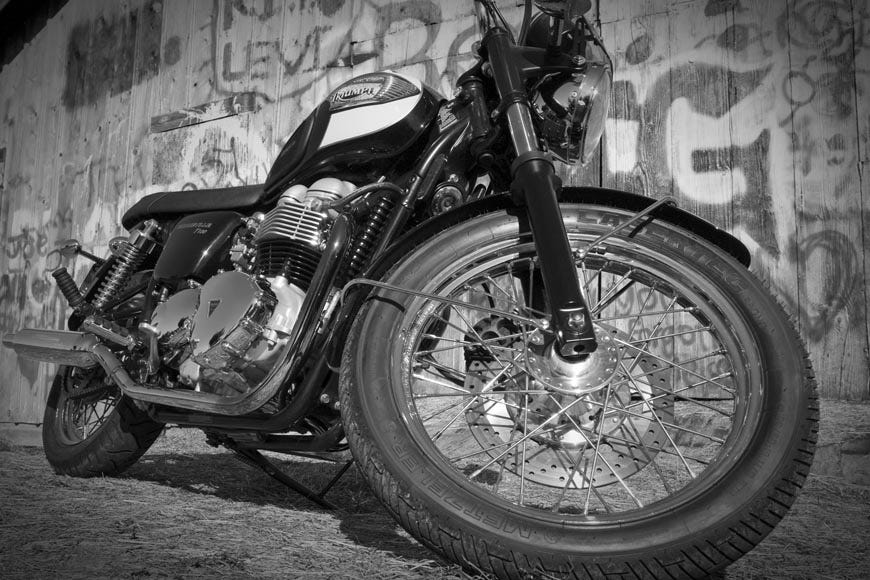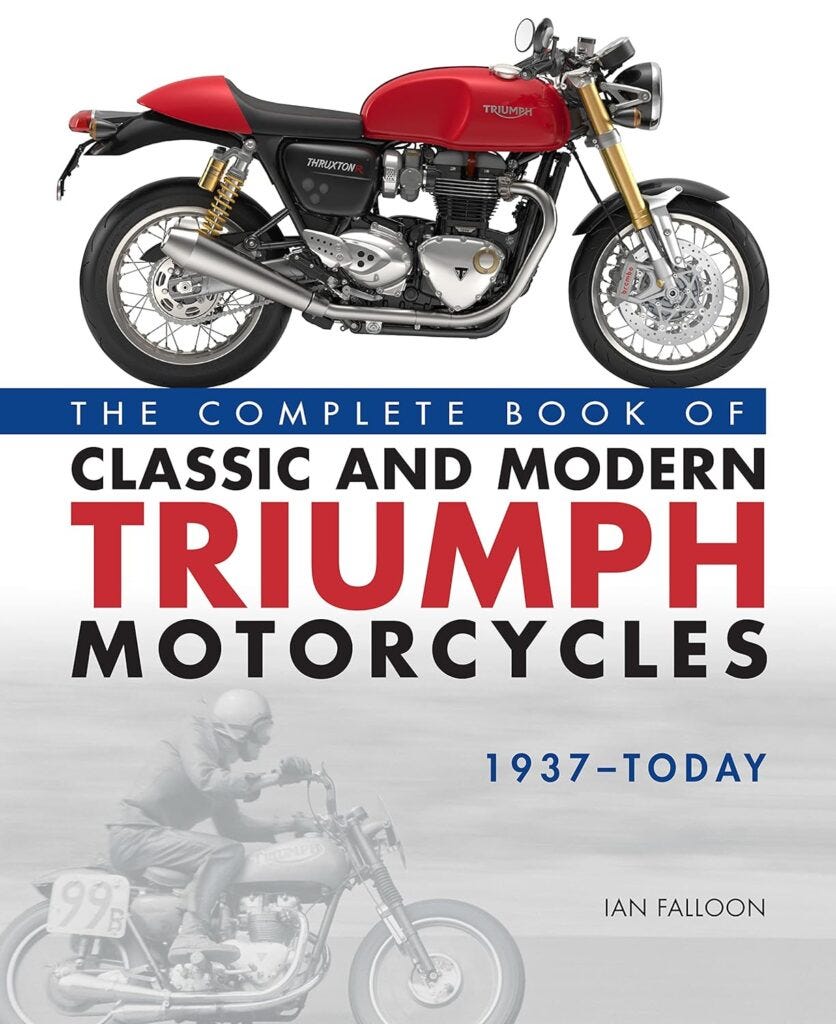The History of Triumph Motorcycles
Besides Norton and BSA, Triumph is probably one of the most recognized names when it comes to British motorcycle manufacturers. Popular among the café racers of the 50s and 60s, the company is also well known for oil leaks, vibrations, and electronic problems with its motorcycles of the same years. The Triumph motorcycle company has had a long and varied history, eventually experiencing a resurrection in the late 1990s. Classic Triumph motorcycles are a well sought after collectors’ items, continually seeing an increase in value for well maintained and restored models, and the new Triumphs are as popular as ever, with none of the oil leaks, vibrations, and comfort issues that the old models are known for.
The Beginning of Triumph motorcycles
Triumph’s origins began in 1885 when Siegfried Bettmann, a German immigrant, began importing bicycles as the S. Bettmann & Co. Import Export Agency, in London. The S. Bettmann & Co. imported German made bicycles and sewing machines. A year later, Bettmann changed the name to the Triumph Cycle Company, eventually to become Triumph Co. Ltd.
In 1888, Bettmann and his new partner Maurice Schulte purchases a location in Coventry where they began producing Triumph-branded bicycles in 1889. It wasn’t until 1898 that they decided to begin producing motorcycles, releasing the first model in 1902, which was basically a bicycle with a small engine attached, known as the “No. 1”. The engine was a single cylinder 2hp Minerva imported from a Belgium company. Three years later, in 1905, Triumph began producing its own motorcycles and a 363cc 3hp engine.
The company’s motorcycle sales increased quickly, along with race wins at such events as the Isle of Man. Triumph also added automobiles to the lineup in 1923 when it purchased the Hillman car factory in Coventry. The automotive and motorcycle divisions were separated into distinct companies in 1936 as a result of both the depression and sluggish sales from the car division.
The War Years
Triumph was called into action during both world wars. During World War I, all motorcycle production was switched to support the war effort, where more than 30,000 motorcycles were produced. The Triumph Type H used a 500cc engine and proved to be a reliable motorcycle for the war effort.
The Triumph factory was bombed by the Germans during The Second World War in 1940, and a new factory was built at Meriden in 1942. The company was able to maximize production churning out 300 motorcycles a week during the war. Triumph renamed the 343cc Model 3H the 3HW, which was used by the military.
The Glory Days of Triumph
In 1951 BSA Motorcycle bought Triumph and saw them release one of the company’s most well-known models, the Bonneville in 1959. At the time these models were called the T120. The Bonneville was named after the Bonneville Salt Flats where Johnny Allen set the land speed record on a 650cc Triumph in 1956. The combined BSA and Triumph companies became the world’s largest motorcycle manufacturing company.
With the popularity of the Bonneville and racing success, the company’s sales continued to excel. By the end of the 1960s, the majority of Triumphs sales were exported, primarily to the United States.
The Decline of Triumph
With the success of Japanese imports into the U.S. market, whose bikes were low priced, reliable, and just as quick as the British bikes, Triumph sales quickly began to decline in the 1970s. Continuous management changes and poor management decisions resulted in the company losing money by 1972.
In 1973, the British government intervened in an attempt to save the Triumph Company and forced the formation of Norton-Villiers-Triumph (NVT), which included BSA, Triumph, and the remnants of AMC, including Norton-Villiers. The management of the combined companies shut down the Meriden Triumph factory in an attempt to consolidate production.
The newly unemployed Triumph workers occupied the factory, striking for almost two years. Finally, after 18 months, the remaining 200 workers forced the re-opening of the Meriden factory, where they continued to produce the Bonneville. In 1977, the factory became a co-op in a final attempt to save the company. The co-op attempted to improve quality and Triumph’s reputation, but it was too late to prevent the decline. Japanese motorcycle sales, combined with the higher cost of Triumph motorcycles, forced the factory to eventually shut down in 1983.
Triumph Revival
A developer named John Bloor purchased the company in 1983, who was interested in developing on the Meriden factory site. The name lived on with people such as Les Harris, who continued to manufacture parts for the motorcycles, and even manufacturing limited versions of the Bonneville and Tiger through 1988 which were released only to the U.K. market.
John Bloore eventually put together a team of designers who released the first new Triumph in 1990 with a limited production. Throughout the 1990s, production continued to increase. Bloor’s focus on quality and continual improvement of each model has allowed the company to slowly increase market share, while building a well-made and reliable motorcycle. Currently, the factory is based in Hinckley and is in full production with new models, updates to classic models, and a worldwide distribution.
The legacy of Triumph is a shining example of strength and the unrelenting power of its motorcycles. From its origins in 1885, through struggles and obstacles, to its resurgence as an international leader in the motorcycle industry, Triumph has established itself as more than just a brand - it’s a way of life. The enduring appeal of Triumph can be heard in the roar of its engines, seen in the luster of its chrome, and felt in the exhilaration of hitting the open road.
The Complete Book of Classic and Modern Triumph Motorcycles 1937-Today
Note: This article contains an affiliate links. That means if you click through and make a purchase, I may earn a small commission at no extra cost to you.





